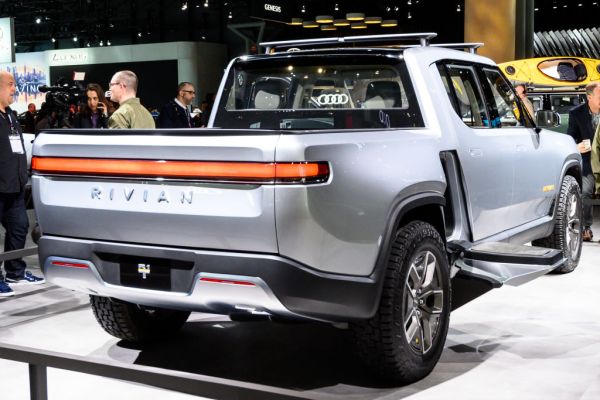Several companies rolled out electric pickups in 2019. Tesla’s Cybertruck got most of the attention, but don’t sleep on General Motors and Ford — bringing electric pickups to market is critical for the viability of electric vehicles.
Automakers build vehicles around shared components. These platforms, the underpinnings of the vehicles, often live for 10 or more years, and are critical to each automaker’s economic stability. The exterior sheet metal might change, but dozens of models often share the frame, powertrain and electrical components.
Electric pickup platforms offer vehicle makers a new revenue source. Instead of building electric vehicles designed to move people, these platforms can move goods. That’s key to building a long-term strategy around electric vehicles.
Look at Ford, whose best-selling F-150 is just a portion of its success. From the F-150, the automaker has dozens of commercial vehicles built off platforms that share components. If Ford can produce an electric pickup — which it says it’s doing alongside startup Rivian — Ford will be able to electrify its commercial offering more quickly.
Specific vehicle platforms are perfect for electrification. Vehicles with a predictable driving route like municipal vehicles, delivery vans and even hearses could benefit from electric powertrains.
Electric powertrains have long offered advantages over internal combustion; electric counterparts feature fewer moving parts and are now often smaller, allowing for more interior space. And then there’s the torque that gives electric vehicles near-superhero strength.
So far, in this electric vehicle age, vehicle makers have focused on producing EVs that move people. It makes sense. Fifteen years ago, the limiting factor was often batteries. Tesla employed an ultra-lightweight Lotus chassis to compensate for the hundreds of batteries needed to power its original Roadster. It was the only combination that worked. In 2020, however, batteries have progressed to a point where energy density is much higher, allowing less to power more.
Commercial vehicles are ripe for electrification. Like pickups, they offer much more space to pack batteries, and buyers of these vehicles often do not have the same cosmetic expectations as consumers; Porsche Taycan owners are more concerned with form and fit than most delivery van drivers. This frees up engineers to cram more batteries into the vehicle’s frame.
Startups would be wise to look past the crowded electric vehicle world and into the emerging market of commercial electric vehicles. As automakers ramp up electric vehicle production, they will look for off-the-shelf solutions for common problems.
Some EV makers are already pursuing this opportunity. Startup Rivian took investment from Ford and VW and is reportedly working alongside these companies to help develop their EV plans. The Rivian platform seems versatile enough to be adopted into commercial vehicles.
General Motors recently announced the return of the Hummer as an electric vehicle. Offering 1,000 hp and 11,500 ft-lbs of torque in the rear wheels, the truck is set to be a powerhouse. That amount of power is overkill for most consumer vehicles, but would make more sense in medium-duty utility trucks. General Motors can’t start with the work trucks — it must first prove viability in consumer vehicles where the workload is less.
Since the days of Ransom Olds, Billy Durant and Henry Ford, automobile manufacturers have long built one vehicle and modified it to fit different tasks. Electric vehicles will be more of the same with pickups ushering in a new era of electric utility.
